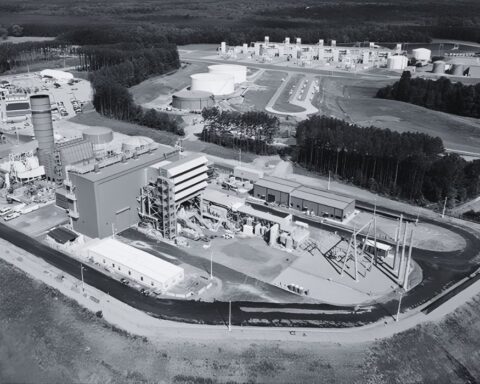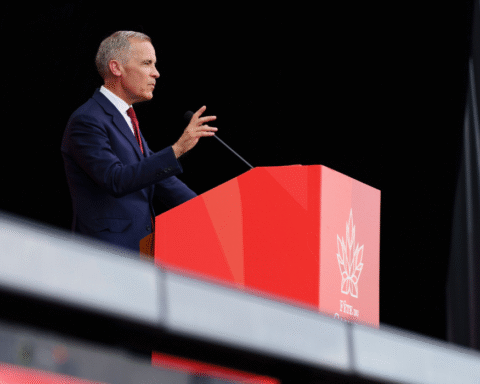Corporate Knights sent two graduate students to a panel at the most recent Social Investment Organization conference, where they attended a panel on “Aboriginal Communities and Extractives Industry: Is Conflict Inevitable?” It was moderated by Robert Walker, Vice President, ESG Services, NEI Investments and Ethical Funds. Panelists included Cynthia Callison, Partner at Callison & Hanna; Lana Eagle, Director of Aboriginal Engagement at PR Associates; Bob Joseph, President, Indigenous Corporate Training Inc. and President of National Aboriginal Energy and Power Association; Peter MacConnachie, Suncor; Dominique Ramirez, Goldcorp
Canada has a rich mix of cultures, and as citizens it is important to have a good understanding of Aboriginal perspectives and rights dating back from pre-colonial history up until today. There are over 600 First Nations in the country, each with unique cultures and histories and undergoing varying stages of development. This variety of contexts and cultures means there cannot be a single solution to working with Aboriginal communities.
Regardless of where a community is on the development continuum, for many Aboriginal people the ability to use their traditional land is tied to the survival of their people and culture. Environmental management is important to Aboriginal communities as their culture is grounded in long-term perspectives. Extractives projects that seem to threaten the ability of communities to use their land or that fail to consider what happens beyond mine closure have the most potential to cause conflict. In all communities, Aboriginal or not, it is increasingly imperative for companies in the extractives industry to obtain a social licence to operate, which is effectively the wider social acceptance and support of a project. Without a social licence, a company risks conflict, delays, denial of permits, bad publicity and loss of reputation, among other things.
It is not surprising that the perspectives and objectives of the extractives industry and Aboriginal communities can differ. In Canada and abroad, the publicized conflict between Aboriginal communities and the extractives industry has been increasing in both intensity and occurrence. This panel, which focused on the mining sector, represented a variety of perspectives, including industry (mining and oil), Aboriginal local government and Aboriginal consultancy. The panel provided some context to the potential effects of mining projects on nearby communities: health and safety; cultural and community lifestyle; social infrastructure; security and violence; and other indirect economic impacts. The panel was generally in agreement on two major points: that there is no one-off solution appropriate for these challenges, as the variety of cultures and contexts is too diverse; and that legal frameworks matter when it comes to approaching and solving Aboriginal-industry conflict.
The panel went on to discuss the importance of rights and standards, which is reflective of many of the current conversations being held about Aboriginal-industry issues. The legal landscape has changed in the past 15 years, in Canada and abroad. It was striking how much time the panelists spent ensuring the audience was up to speed on the issues, an indication they felt that most do not understand how things have changed in recent years.
Although many of the policies from industry associations are good starting points, most of them are voluntary (like the International Council on Mining and Metals) and therefore provide uncertainty to Aboriginal communities and companies alike. These voluntary policies provide the framework under which an Aboriginal community can say “yes” to a project, but they do not offer a strong mechanism by which a community can say “no.” To the great relief of many Aboriginal communities, the legal landscape is changing to provide them with mechanisms to effectively say “no”, or at least “not now” and “not like this.” Canadian Aboriginal communities are continuously increasing their demands that legal rights be recognized and upheld. Once a stakeholder group that was under-represented, Canada’s Aboriginals are standing up and being supported by increasing numbers of professionals – of Aboriginal descent and otherwise – and they mean business. The regulatory landscape has changed, but more importantly, so has the audience that is interpreting and operationalizing this regulatory landscape.
Increased legal leverage for aboriginal peoples
In Canada, the Haida decision has changed the game for the extractives sector doing business in large parts of the country where Aboriginal treaties have not yet been concluded. In 2004, the Supreme Court of Canada made a historical ruling that recognized it is the legal duty of the Crown to “consult and accommodate” Aboriginal communities with regard to proposed projects that may significantly impact their traditional territories (Blake, Cassels and Graydon LLP). The court recognized that the Crown’s duty to Aboriginal peoples finds its roots in Canadian history and in the Canadian Constitution (Section 35A). It flows from the historical relationship between Aboriginal peoples and the Crown, whereby Aboriginal peoples did not concede the rights and title to their land. While the onus is not legally on industry to consult and accommodate, by convention the government has been delegating this responsibility and its associated costs to companies seeking permits. Moreover, the Government of Canada fulfils its legal duty by simply withholding permits until the affected communities have been appropriately consulted and accommodated. With approximately 200 First Nations in B.C. alone – most of which have not signed treaties – it is virtually impossible to do any major projects without engaging with Aboriginal communities. Another mechanism available to Aboriginal communities that can further slow the permit application process if they are unhappy about how a company has approached them is the ability to initiate a judicial review and/or a rights and title application. These can delay the permit application process by several years, representing an unacceptable delay to companies and their shareholders, but is a risk that companies knowingly take when they do not consult properly.
In 2007, after years in the making, the UN Declaration on the Rights of Indigenous Peoples was finalized and has added significant leverage to stakeholder complaints against mining companies, especially in developing countries where national governance is weak. The declaration has had diverse legal effects and is being used to inform the creation of national laws in many developing countries. The declaration emphasizes rights already found in human rights treaties and also reflects what is known as customary international law, which encompasses legal standards that have become obligatory on states through their widespread use. The declaration is also being relied upon by domestic and regional courts, as well as other bodies within regional human rights systems in Africa and the Americas.
Free, prior and informed consent (FPIC), in relation to mining activities taking place on Indigenous or Aboriginal lands, refers to a process whereby affected Indigenous peoples freely have the choice, based on sufficient information concerning the benefits and disadvantages of the project, of whether and how these activities occur, according to their systems of customary decision making. FPIC has been mandated or recommended in a number of international and national legal and policy documents, including the UN Declaration on the Rights of Indigenous Peoples. It finds its origins in the International Labour Organization’s (ILO) Convention on Indigenous and Tribal Peoples in Independent Countries (Convention 169), which was first ratified in 1989, initially by most Latin American countries and now by many European countries. FPIC is both controversial and evolving, and one of the panelists noted that industry associations are currently conducting their own research into FPIC and its applicability, as well as what it means for different organizations. FPIC is challenging to implement in practice as it is still a voluntary standard and has no legal bearing in most jurisdictions. It also stands in opposition to some regulatory frameworks, as its application can work to challenge existing national laws regarding stakeholder consultation and the awarding of various permits. Furthermore, communities can’t actually draw on it to say “no”, unless it has previously been incorporated into national laws in that particular jurisdiction.
The panelists asked the audience to think about how the extractives industry is responding to these changes, if at all. It was noted that there is no coordinated effort by industry or even individual companies to adopt these internationally recognized standards. Canada has a strong legal framework and constitutionally recognized rights for Indigenous/Aboriginal peoples; however, the panelists addressed the fact that this is simply not the case in many developing countries. The conversation turned to highlight the perception that Canadian companies are not applying the same ethical standards abroad as they do in Canada. Goldcorp’s challenges at its Marlin mine in Guatemala was raised as an example – this mine has become somewhat of a lightening rod or scapegoat through which the ethical issues that plague the wider mining industry are frequently aired.
Continuing on the theme of rights and standards, Impact-Benefit Agreements (IBA) were touched upon to highlight how they, too, have evolved in recent years. One often-referenced case that was brought up is New Gold’s New Afton mine near Kamloops, B.C. There was consensus that New Gold had approached stakeholder relations in a positive way and that the mine is a success story for IBAs and consultation. Contained within the IBA are two features that underscore the positive relationship between New Gold and the surrounding Aboriginal communities: the use of a Participation Agreement and a Joint Implementation Committee. The Participation Agreement allowed communities to be involved before the project got approval and enabled their involvement in the design, construction and operation of the mine. It also involves them in the creation of environmental policies and ongoing environmental management. The Joint Implementation Committee was jokingly said to resemble a marriage, as it sets the framework to work together and move through the good times and bad. It was created out of the recognition that it is very difficult to actually make IBAs work on the ground and that, unsurprisingly, the key is the implementation.
Key messages
Good relationships occur when there is meaningful engagement from the very start. The behaviour of mining representatives in the first years at a potential mine site will largely determine whether the surrounding community will become distrustful and antagonistic towards mining companies, or, if they feel listened to and optimistic about a potential mine. From an Aboriginal perspective this means learning about each other’s culture and history; establishing trust through consistently respectful interactions; industry taking a genuine interest in learning about the communities’ fears and aspirations; and most importantly, making visible efforts to address these. When the permit application process is approached solely within a judicial, regulatory and risk management context it doesn’t establish trust because communities recognize that they are only seen as a risk, and therefore, only represent another obstacle for the project. There must be clear and authentic intent to develop a mutually beneficial relationship, or conflict will arise.
To obtain and maintain a sturdy social licence to operate, anyone associated with a mine or potential mine must build trust-based relationships, founded on mutual respect that goes beyond appeasement, and that is actually built on interests and needs. However, the mining industry is cyclical and the economic environment can change quite quickly and intensely. As a result, most companies have difficulty seeing beyond the next quarter. A long-term perspective on building relationships and satisfying interests is absolutely necessary in order to develop a robust social licence to operate.
Based on recent reports in national and international newspapers, it is clear to see the mining industry is in crisis. Slowed economic growth has led to deflated commodity prices and even industry darling, gold, has taken a 30% tumble since the end of 2011. Rising costs, an aging workforce and renewed resource nationalism are causing serious problems for the industry and have led to a significant loss of investor value and confidence. Amid the industry’s economic struggles is a lack of respect for laws, cultures, internationally recognized rights, and deeply entrenched and widely held societal values. This has no doubt contributed to the loss of investor confidence in those who are at the helm of mining companies. Continuous “bad news” stories are hurting the industry more than it realizes and it is in its collective interest, and those of the shareholders it represents, to pull up its socks and do better. While some of the bigger companies are taking steps in the right direction, there are many laggards that are ultimately undermining the industry’s progress and image.
The future growth of the mining industry hinges on success in establishing and managing a social licence with communities, Aboriginal and otherwise. Companies need to understand that community conflict is likely – and costly – and the tools to avoid and resolve these problems need to be made part of the business model.







